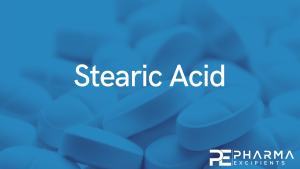3D printed infliximab suppositories for rectal biologic delivery

Infliximab is a monoclonal antibody that plays an important role in the management and treatment of chronic inflammatory bowel diseases (IBD). Due to its macromolecular structure, its delivery through the oral route is challenging, limiting its administration to only via the parenteral route. The rectal route offers an alternative way for administering infliximab, allowing it to be localised at the disease site and circumventing its passage across the alimentary canal and thus, maintaining its integrity and bioactivity. Three-dimensional (3D) printing is an advanced production technology that permits the creation of dose-flexible drug products from digital designs. The current study assessed the feasibility of utilising semi-solid extrusion 3D printing for the fabrication of infliximab-loaded suppositories for the local treatment of IBD. Various printing inks composed of Gelucire® (48/16 or 44/14) mixed with coconut oil and/or purified water were investigated. It was shown that following reconstitution in water, the infliximab solution can be directly incorporated into the printing ink of Gelucire® 48/16 and can withstand the extrusion process, resulting in well-defined suppositories. Since water content and temperature are critical for safeguarding infliximab’s potency, the effect of changing the composition of the printing inks and printing parameters on infliximab’s biologic efficiency was evaluated by measuring its binding capacity (i.e., the amount of infliximab that actively binds to its antigen to exert an effect). Despite drug loading assays showing that infliximab remains intact following printing, it was found that the incorporation of water in isolation results in only ∼65% binding capacity. However, when oil is added to the mixture, infliximab’s binding capacity increases up to ∼85%. These promising results demonstrate that 3D printing has the potential to be exploited as a novel platform for fabricating dosage forms containing biopharmaceuticals, avoiding patients’ compliance issues observed with injectables and addressing their unmet needs.
2.1. Materials
Infliximab (European Pharmacopeia reference standard) and coconut oil (from Cocos nucifera) were purchased from Merck Life Sciences, UK. Gelucire® 48/16 (also known as Polyethylene glycol-32 (PEG-32) stearate; and is composed of PEG-32 (molecular weight (MW) 1500 g/mol) esters of palmitic (C16) and stearic (C18) acids) and 44/14 (also known as lauroyl PEG-32 glycerides; and is composed of PEG-32 (MW 1500 g/mol) mono- and diesters of lauric acid (C12) mixed with a small portion of mono, di- and triglycerides) were kindly donated by Gattefossé, France. The recombinant human TNF-α protein was acquired from R&D Systems, Bio-Techne, UK. The goat anti-human IgG Fc secondary antibody Horseradish Peroxidase (HRP) conjugate was purchased from ThermoFisher Scientific, UK. Bovine Serum Albumin (BSA), Tween 20 and Dulbecco’s Phosphate Buffered Saline (PBS) were obtained from Sigma-Aldrich, UK. The enhanced K-BLUE 3,3′,5,5′ tetramethylbenzidine (TMB) substrate and RED STOP solutions were bought from Neogen Europe Limited, Scotland. Ultrapure water was acquired by filtering tap water through a PURELAB Chorus 1 complete water purification system (Veolia Water Technologies, UK).
Download the full article as PDF here: 3D printed infliximab suppositories for rectal biologic delivery
or read it here
Atheer Awad, Alvaro Goyanes, Mine Orlu, Simon Gaisford, Abdul W. Basit, 3D printed infliximab suppositories for rectal biologic delivery, International Journal of Pharmaceutics: X, Volume 5, 2023, 100176, ISSN 2590-1567,
https://doi.org/10.1016/j.ijpx.2023.100176.
Read more on Stearic Acid as a pharmaceutical Excipient here:


